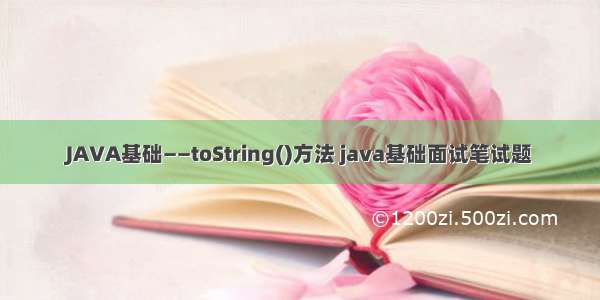
我总结出了很多互联网公司的面试题及答案,并整理成了文档,以及各种学习的进阶学习资料,免费分享给大家。
扫描二维码或搜索下图红色VX号,加VX好友,拉你进【程序员面试学习交流群】免费领取。也欢迎各位一起在群里探讨技术。
推荐文章:Java 面试知识点解析;Mysql优化技巧(数据库设计、命名规范、索引优化
Java集合框架
<Java集合框架的四大接口>
Collection:存储无序的、不唯一的数据;其下有List和Set两大接口。
List:存储有序的、不唯一的数据;
Set:存储无序的、唯一的数据;
Map:以键值对的形式存储数据,以键取值。键不能重复,但值可以重复。
接口的常用实现类:ArrayList、LinkedList、Vector、HashSet、LinkedHashSet、TreeSet、HashMap、LinkedHashMap、TreeMap、HashTable
一、List接口
是一个有序集合,继承自Collection接口。现已知常用实现类有:ArrayList、LinkedList、Vector。
1. 常用方法:
add():在列表的最后添加元素;
add(index,obj):在列表的指定位置添加元素;
size():返回当前列表的元素个数
get(int index):返回下标为index的元素;
clear():清除列表中所有元素;
isEmpty():检测列表是否为空;返回true/false;
contains():传入一个对象,检测列表中是否含有该对象;
indexOf():传入一个对象,返回该对象在列表中首次出现的地址;
lastInsevOf():传入一个对象,返回该对象在列表中最后一次出现的地址;
remove():传入一个下标,或者一个对象,删除指定元素;如果删除指定对象,需要重写equals()方法,比对传入的对象是不是属于原列表,如果属于,结果返回true;
set(index,obj):用新传入的对象,将指定位置的元素替换掉,返回被替换前的元素对象;
subList():截取一个子列表返回List类型;
toArray():将列表转为数组,返回一个Object[]类型;
iterator():使用迭代器遍历。
2. 如何输出List列表?
a. for循环;
b. foreach遍历(比较常用);
c. 使用迭代器遍历列表;
3. List接口的常用实现类:
ArrayList和LinkedList实现类是继承自List接口的,所以List的常用方法它们也是适用的。
a. ArrayList
ArrayList实现了一个长度可变的数组,在内存空间中开辟一串连续的空间。
b. LinkedList
LinkedList使用链表结构存储数据,在插入和删除元素是速度非常快。
1 //ArrayList实现类 2 ArrayList<String> list1=new ArrayList<String>(); 3 list1.add("第一条数据"); 4 list1.add("第二条数据"); 5 list1.add("第三条数据"); 6 list1.add("第四条数据"); 7 list1.add("第五条数据"); 8 list1.add("第三条数据"); 9 list1.add(2,"第六条数据"); //在第三条数据后添加“第六条数据”10 11 System.out.println(list1.size()); //返回列表长度12 System.out.println(list1.get(2)); //返回“第六条数据”13 //list1.clear(); //清除所有数据14 System.out.println(list1.isEmpty()); //返回false15 System.out.println(list1.contains("第一条数据")); //返回true16 System.out.println(list1.indexOf("第三条数据")); //返回317 System.out.println(list1.lastIndexOf("第三条数据")); //返回618 System.out.println(list1.remove(1)); //删除“第二条数据”19 System.out.println(list1.set(0, "替换第一条数据")); //替换第一条数据20 List list=list1.subList(2, 5); //截取第三到第五条数据,返回List21 System.out.println(list1.toString()); //转成数组22 23 //LinkedList实现类24 LinkedList<News> list2=new LinkedList<News>();25 list2.add(new News(1,"xxxxxxx","赵"));26 list2.add(new News(2,"sssssss","钱"));27 list2.add(new News(3,"yyyyyyy","孙"));28 list2.add(new News(4,"nnnnnnn","李"));29 list2.add(new News(5,"rrrrrrr","周"));30 System.out.println(list2.contains(new News(3,"yyyyyyy","孙"))); //返回为true;重写equals()方法;如果不重写equals()方法,返回为false;31 System.out.println(list2.remove(new News(1,"xxxxxxx","赵"))); //返回为true32 33 /*34* 使用for循环遍历35*/36 for (int i = 0; i < list1.size(); i++) {37 if(list1.get(i) instanceof String){ //判断传入的数据属不属于String类型38 String str=list1.get(i);39 System.out.println(str);40 }41 }42 /*43* foreach遍历44*/45 for (News news : list2) {46 System.out.println(news.getId()+" "+news.getTitle()+""+news.getAuthor());47 }48 /*49* 迭代器遍历50*/51 Iterator<String> iter=list.iterator();52 while(iter.hasNext()){ //判断list有没有下一条53 String s=iter.next(); //字符串取到下一条54 System.out.println(s);55 } 56
1 /** 2 *News类 3 */ 4 class News{ 5private int id; 6private String title; 7private String author; 8 9@Override10public boolean equals(Object obj) {11 if (this == obj)12 return true;13 if (obj == null)14 return false;15 if (getClass() != obj.getClass())16 return false;17 News other = (News) obj;18 if (author == null) {19 if (other.author != null)20 return false;21 } else if (!author.equals(other.author))22 return false;23 if (id != other.id)24 return false;25 if (title == null) {26 if (other.title != null)27 return false;28 } else if (!title.equals(other.title))29 return false;30 return true;31}32public News() {33 super();34}35public News(int id, String title, String author) {36 super();37 this.id = id;38 this.title = title;39 this.author = author;40}41public int getId() {42 return id;43}44public void setId(int id) {45 this.id = id;46}47public String getTitle() {48 return title;49}50public void setTitle(String title) {51 this.title = title;52}53public String getAuthor() {54 return author;55}56public void setAuthor(String author) {57 this.author = author;58}596061 }
二、Set接口
1. 常用方法:
与List接口基本相同。但是Set接口中的元素是无序的,因此没有与下标有关的方法。例如:get(index)、remove(index)、add(index,obj)
2. Set接口的现已知常用实现类有:
HashSet、LinkedHashSet、TreeSet
3. HashSet
底层是HashMap的相关方法,传入数据后,根据数据的hashCode进行散列运算,得到一个散列值后再进行运算,确定元素在序列中存储的位置。
所以,使用HashSet存数据必须在实体类中重写hashCode和equals方法!!
1//HashSet无序的 2Set<String> set1=new HashSet<String>(); 3set1.add("set1"); 4set1.add("set2"); 5set1.add("set3"); 6set1.add("set4"); 7set1.add("set5"); 8 9//foreach遍历10for (String set : set1) {11 System.out.println(set);12}13
4. LinkedHashSet
在HashSet的基础上,新增了一个链表。用链表来记录HashSet种元素放入的顺序;HashSet依然是无序的,但链表会按照存入的顺序存储。
1//LinkedHashSet按照放入的顺序输出 2Set<Person> set2=new LinkedHashSet<Person>(); 3 // set2.addAll(set1); //追加set1的所有数据 4set2.add(new Person(1,"红")); 5set2.add(new Person(2,"黄")); 6set2.add(new Person(3,"蓝")); 7set2.add(new Person(4,"绿")); 8set2.add(new Person(4,"绿"));9 10//迭代器遍历11Iterator<Person> iter=set2.iterator();12while(iter.hasNext()){13 Person p=iter.next();14 System.out.println(p.getId()+""+p.getName());15}16 17 class Person{18private int id;19private String name;/*22* 如果不重写hashCode和equals方法,存入相同数据时将无法比对23*24*/25@Override26public int hashCode() {27 final int prime = 31;28 int result = 1;29 result = prime * result + id;30 result = prime * result + ((name == null) ? 0 : name.hashCode());31 return result;32}33@Override34public boolean equals(Object obj) {35 if (this == obj)36 return true;37 if (obj == null)38 return false;39 if (getClass() != obj.getClass())40 return false;41 Person other = (Person) obj;42 if (id != other.id)43 return false;44 if (name == null) {45 if (other.name != null)46 return false;47 } else if (!name.equals(other.name))48 return false;49 return true;50}51public Person() {52 super();53}54public Person(int id, String name) {55 super();56 this.id = id;57 this.name = name;58}59public int getId() {60 return id;61}62public void setId(int id) {63 this.id = id;64}65public String getName() {66 return name;67}68public void setName(String name) {69 this.name = name;70}7172 }
5. TreeSet
将存入的数据,进行排序,然后输出。
如果传入的是一个实体对象,那么需要传入比较器:实体类实现Comparable接口,并重写CompareTo方法;
1//TreeSet从小到大输出。存入元素,默认升序排序;存入实体对象,需要传入比较器 2Set<Person> set3=new TreeSet<Person>(); 3set3.add(new Person(11,"a")); 4set3.add(new Person(22,"b")); 5set3.add(new Person(33,"c")); 6set3.add(new Person(44,"d")); 7 8//迭代器遍历 9Iterator<Person> iter=set3.iterator();10while(iter.hasNext()){11 Person p=iter.next();12 System.out.println(p.getId()+""+p.getName());13}14 15 class Person implements Comparable{ //实现16private int id;17private String name;1819//compareTo方法判断传入的对象和已有对象20@Override21public int compareTo(Object o) {22 Person p=null;23 if(o instanceof Person){24 p=(Person)o;25 }else{26 return 0;27 }28 return this.id -p.getId(); //为正数,升序;为负数,降序;等于0,位置不变29}3031public Person() {32 super();33}34public Person(int id, String name) {35 super();36 this.id = id;37 this.name = name;38}39public int getId() {40 return id;41}42public void setId(int id) {43 this.id = id;44}45public String getName() {46 return name;47}48public void setName(String name) {49 this.name = name;50}515253 }
三、Map接口
1. Map接口的特点:
以键值对的形式存储数据,以键取值。键不能重复,值可以重复。
2. Map接口的现已知常用实现类有:
HashMap、HashTable、LinkedHashMap、TreeMap
3. 常用方法:
put(key,value):向Map的最后追加一个键值对;
get(key):通过键,取到一个值;
clear():清除Map中的所有数据;
containsKey(key):检测是否包含指定的键;
containsValue(obj):检测是否包含指定的值;
replace():替换指定键的值;
4. 遍历Map
a. keySet():返回Set,先取键,再取值;
b. values():返回Collection,直接取值;
c. 取代一个entry键值对,返回Set<Entry<>>;
1 Map<String, String> map1=new HashMap<String, String>(); 2 map1.put("01", "aaaaaa"); 3 map1.put("02", "bbbbbb"); 4 map1.put("03", "cccccc"); 5 map1.put("04", "dddddd"); 6 // map1.clear(); //清除所有数据 7 System.out.println(map1.containsKey("01")); //返回true 8 System.out.println(map1.containsValue("aaaa")); //返回false 9 System.out.println(map1.replace("03", "dddddd")); //将cccccc替换为dddddd10 System.out.println(map1.get("02")); //返回bbbbbb11 12 /**13* 遍历Map的方式一,先取键,再取值14*/15 Set<String> keys=map1.keySet(); //取到所有键16 Iterator<String> iter=keys.iterator();17 while(iter.hasNext()){ //迭代器遍历取到每一个键18 String key=iter.next();19 System.out.println(key+" "+map1.get(key)); //key:取到键 map1.get(key):取到每个键对应的值20 }21 22 /**23* 遍历Map的方式二,直接取值;只能取到值24*/25 Collection<String> values = map1.values();26 Iterator<String> iter1= values.iterator();27 while(iter1.hasNext()){28 System.out.println(iter1.next());29 }30 31 /**32* 遍历Map的方式三,取到一个entry键值对33*/34 Set<Entry<String,String>> set= map1.entrySet();35 Iterator<Entry<String,String>> iter2=set.iterator();36 while(iter2.hasNext()){37 Entry<String,String> entry=iter2.next();38 System.out.println(entry.getKey()+" "+entry.getValue());39 }40
5. LinkedHashMap
可以使用列表,记录数据放入的次序,输出的顺序与放入的顺序一致。与LinkEDHashSet一样。
6. TreeMap
根据键的顺序,进行排序后输出。与TreeSet。
如果传入的是实体对象,必须重写比较函数。
7. HashMap和HashTable的区别?
a. HashTable是线程安全的,HashMap是线程不安全的;
b. HashTable的键不能为null,HashMap的键可以为null;
c. HashTable继承自Dirctionary字典类,HashMap继承自abstract类;
d. 扩容大小:HashTable两倍,HashMap两倍加一;
e. 初始容量:HashTable为11,HashMap为16;两者的填充因子默认都是0.75;
转载:/yanglianwei/p/8847861.html
推荐内容:
Java生态行业报告
Java 延迟队列使用
JAVA多线程和并发基础面试问答
JAVA实现用户的权限管理
JAVA面试题
java高级开发面试总结
Java面试通关要点汇总集
JAVA工程师面试题库
Java面试:投行的15个多线程和并发面试题
java面试——问题回溯














